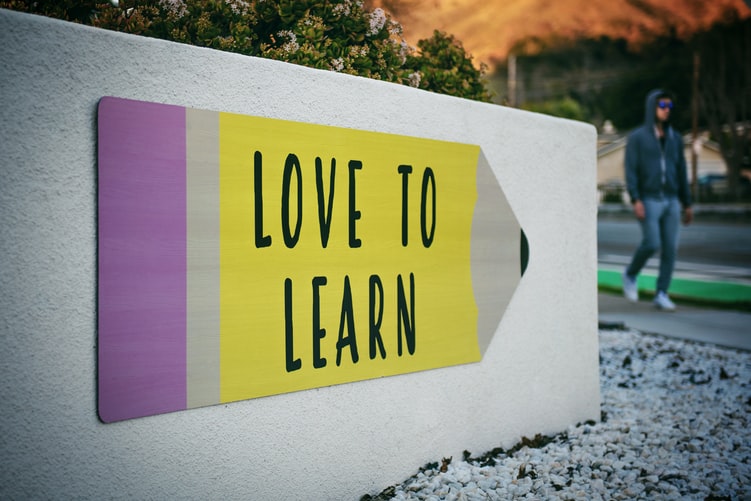Writing a School District Mission Statement—The Whys and the Hows
 A school district represents not one but a group of schools under the same administration—which is why your district mission statement has to be nothing short of perfect. Whether you have already created a vision statement for the district or not, you’re going to have to put a lot of work into coming up with its mission and putting it into words.
A school district represents not one but a group of schools under the same administration—which is why your district mission statement has to be nothing short of perfect. Whether you have already created a vision statement for the district or not, you’re going to have to put a lot of work into coming up with its mission and putting it into words.
The difference between a poorly and excellently written school mission is enormous. Your declaration profoundly impacts the school culture in the entire district—from the attitude your students have towards school and their learning practices to the administrative body and the decision-making processes that affect everyone within your school community.
School mission statements have to resonate throughout the entire community and lead all the people involved toward their shared goals. That is why writing a mission for your school district is not going to be an easy task—but take heart! With active involvement and collaboration, you’ll be able to pen your district’s values, purpose, and objectives into a declaration everyone in your community will be proud to be guided by.

Credit: Abe Baali
School District Mission Statement—The What and the Why
A school mission statement is an integral part of an educational institution. It complements your school’s vision—what you want your school to achieve in the future—and explains how you run your establishment.
The elements every school district mission statement should have are:
- The name of the school district
- Beliefs and values of your school community
- Steps you’re taking to achieve the long-term goal established in your vision
- The component of your school community that makes it unique
When writing a mission for your school district, you should think a bit like a business owner who is introducing their product and wants to sell it to parents and future generations of students. For this reason, you want to begin your statement with your school district’s full name. You should also write the statement in the third-person plural so that it unequivocally reflects everyone’s involvement.
Having acknowledged that, you should not forget that the core reason your educational institutions exist isn’t to attract buyers but to provide effective and fruitful education. That is why the key element in your school district mission statement is the list of values and principles you promote.
Next to the beliefs your school district holds, your statement should outline the practical ways in which the schools foster those values. For example, maybe your school district has a counseling program that provides specialist advice and resources for your students to help them be successful in college when they finish high school. If so, your mission statement should stress that.
Perhaps your school counseling program is what makes your district unique. If so, demonstrate how it differs from others in the state or the country. If you want your mission to stand out and drive the community, it needs to include an element that distinguishes it from the rest.
Why You Need a Memorable Mission Statement


Credit: Tim Mossholder
If you feel the school district’s vision and mission aren’t crucial for its functioning, you should think again.
It is true, unfortunately, that many schools write mission statements only because it’s expected of them. Their declarations don’t reflect how their schools are run. This is not a good example of a reimagined education. You need a memorable mission statement because it’s a starting point in order for your:
- Institution to grow
- Students to learn with a clear aim in their heads
- Teachers and administrative staff to contribute to the realization of your shared goal actively and consistently
Here is how a powerful mission statement influences your school district:
| Belief | Community | School Culture |
| Mission statements provide the students and the teaching staff in your school district with a purpose to believe in. Seeing the declaration to fruition will also give them a sense of accomplishment in the long run. | When the entire school community has established a shared purpose in the form of a joint mission, every member will want to work for it. | Mission statements are signposts for the direction you want your school to take. A clear vision and mission for your school district is key to having a positive school culture. |
What Do Mission Statements Look Like?
If you are writing a school district mission statement for the first time, you should check out some examples before you get down to work. Your mission needs to stand out and be unique to your institutions, but it doesn’t hurt to analyze the existing ones to get ideas on the structure and the content.
Here’s an example from the Virginia Beach Public Schools:
“The Virginia Beach City Public Schools, in partnership with the entire community, will empower every student to become a life-long learner who is a responsible, productive, and engaged citizen within the global community.”
We can see that this school has a benevolent vision for the future it wants its students to be a part of. The problem is that the vision is the only part of what is supposed to be the Virginia Beach Schools mission statement.
Another example can be taken from Amherst-Pelham Regional Public Schools:
“The mission of our schools is to provide all students with a high-quality education that enables them to be contributing members of a multiethnic, multicultural, pluralistic society. We seek to create an environment that achieves equity for all students and ensures that each student is a successful learner, is fully respected, and learns to respect others.”
Amherst-Pelham Schools promises a better tomorrow with its district mission statement. This may not convince the readers that the institution is contributing to creating that tomorrow because the statement fails to mention the practices the schools employ.
The final example is from the Napa Valley Unified School District:
“Transforming lives by instilling 21st-century skills and inspiring lifelong learning in every student.”
This is how you can combine vision and mission into one sentence, but you will probably want your mission statement to be a bit more elaborate than that.
Tips for Creating a School District Mission Statement


Credit: Tim Gouw
Since the growth and development of every member within your school district’s community should be gauged according to the standards you established in your vision, coming up with the ways in which you will realize it isn’t easy. Even when you can see clearly how your school is going to accomplish the goals you want it to achieve, putting it all into a mission statement successfully is a complicated process, which is why we’ll break it down for you.
Here are the practical steps you can take to get the perfect mission statement that is going to fit your school district culture just right:
- Reference your vision
- Put together the mission statement team
- Make an outline
- Write the first draft
- Distribute the draft to your team
- Write the final draft
- Figure out the ways your mission will endure
Your Vision Is Your Starting Point
You can’t have a mission—the path your school should be on—without a vision—the destination your school should arrive at. When you embark on the journey of creating your mission statement, refer to your vision first. The clearly set, reachable goals in it will determine what you want to put in your mission statement.
Perhaps your school district is in need of changing its previous vision and mission. A good place to start is checking your vision to see if it has the elements of the SMART method of goal-setting. The concept determines that your goal should be:
- Specific: When it comes to setting a goal, your worst enemy is vagueness. To be focused on accomplishing a task, however broad that task may be, you need to have a clearly defined vision for the future of your school district
- Measurable: Everyone involved in your school community should be able to measure their individual progress
- Achievable: You want to have a goal that is realistic and can be accomplished easily. In other variations of the SMART method, this step is also referred to as “agreed-upon,” which is particularly important for a school vision
- Relevant: Just as everyone needs to align with one goal for your school district, they need to know why that goal is important to achieve. Specificity in your vision is a key component of establishing the relevance of the goal
- Time-based: If you don’t want your students, parents, and educators to forget about your vision and mission days after you create it, give them a specific time frame in which they have to achieve the goals set in the statements
No Man Is an Island
We’ve already emphasized the importance of a shared goal in your vision statement, and the same rule applies when thinking of the ways you will accomplish it. Before you draft your mission, get together several teams—of students, educators, and administrator boards—and have each work on the mission statement.
Relying on your community this way will benefit you and everyone else belonging to your schools’ culture. For example, if the sole reason why you’re writing a district mission statement is to introduce the much-needed innovations in schools, working together on this process will:
- Minimize the fear of change in the community
- Get everyone from the school district to bounce ideas for improvement off each other
- Result in the imagined future everyone wishes to get to
- Make your community remember your mission in the long run
Make an Outline
You might think outlining is a writing strategy you can do without when creating your school’s mission statement—but we would argue otherwise.
Get the ideas you have collected from your district’s stakeholders and start outlining your mission statement. As a result of brainstorming, you will probably have a bunch of elements you want to cover. This is the step at which you’ll want to group many of the ideas you gained into single categories so as not to have a messy and overlong first draft.
Get the First Draft Going
Your next step is sharpening your pen or sitting down at your computer and letting the words pour out freely. Don’t worry about the ultimate result you want to achieve with your statement. You’re not done yet.
Time To Get Some Feedback
When you have a rough draft of your mission, distribute it to the mission statement teams you have gathered previously. You should not rush this process. Give your students, teachers, and administrators time to go over what you have created and improve on it. Maybe you can give them a statement checklist they can complete along with providing their opinions on it.
Polish Up
Use the constructive criticism you got and polish up your first draft. It’s time to get your mission statement to that point of perfection we have mentioned before. To this end, you might wish to have a checklist yourself. Here are some mission statement dos and don’ts you can go over when reviewing your work to make it the best version possible:
| Do’s | Don’ts |
|
|
Make Your Mission an Active Part of Classes
Some people point out that vision and mission statements don’t serve any true purpose to schools if they are neglected. You should make an effort to prevent your statement from falling to oblivion. After all, you didn’t give your best to create a memorable mission only to hang it on the wall of your office and hope people in your school community will remember it.
A good idea is to infuse your mission statement into the school curricula. Have a talk with your teaching staff about the ways they can implement the statement in class activities or discussions. Maybe students can write up their variations on your shared values and goals for a special homework assignment and practice their writing skills along the way.
Bonus Ideas for School District Vision and Mission Statements


Credit: Frederick Medina
“We will prepare all students to be college and career ready by providing a challenging curriculum (rigor) that connects students’ lives and their futures (relevance) in a safe, supportive, and nurturing environment (relationships).”
What you’ve just read is a Jefferson County School District mission statement. Can you notice anything different in it from the previous examples we’ve looked at? That’s right—the brackets containing one-word values Jefferson County schools cherish. Though mission statements are constrictive in many ways—they have to be both specific and concise—you can still use your creativity when constructing them.
Bonus ideas you can try out when writing and putting your mission statement on your school’s district website are:
- Create a motto for your school
- Have a separate list of values, goals, or beliefs
- Come up with an acronym for your vision or mission
Mottos
If you fear your vision or mission statements won’t be easy to memorize, you can come up with a motto for your school district’s core principles that will eliminate the problem. Of course, your motto needs to be a short sentence, but make it resonate with your vision and mission. Ultimately, don’t make it a substitute for your statements but a complement.
Mottos are amazing for school districts because they can be hung anywhere and included in brochures, websites, or even on T-shirts. Plus, they will foster the pride your students and educators have in your school district.
Lists
A list of goals you want your school district to achieve or the values you cherish in your educational institution is a great idea if you think you can’t put them all into a short vision or mission statement. Maybe you can complement your statement on your school district website with such a list. It also gives you more room to include the ideas your mission statement teams have come up with that you couldn’t fit into the official statement.
Acronyms
Not unlike mottos, acronyms are a fun way to instill pride in your school community. Cleveland Heights-University Heights City School District utilizes this method to make its vision an acronym:
“P.A.S.S.A.G.E. — Preparing All Students for Success in A Global Economy.”
Acronyms are also favorable because they contribute to your vision or mission standing out and being memorable in the long run, not just to your school’s existing community but to the people looking to join it.
It’s Time for Change
If you are writing your mission statement because you want to dedicate yourself to transforming your school culture to have your students prepared for the future of work—then kudos to you! You are on the right path.
It’s time to make the 21-century missions that mainstream institutions only boast of an actual reality in American high schools. To be able to reinvent schools, everyone working in educational institutions needs to get involved.
If you have ideas on creating mission statements that will foster the values we need in schools in an active, inspiring, and all-encompassing way, we want to hear all about it. Write to us, and we’ll publish your words on our blog. Let’s reimagine high schools together!

